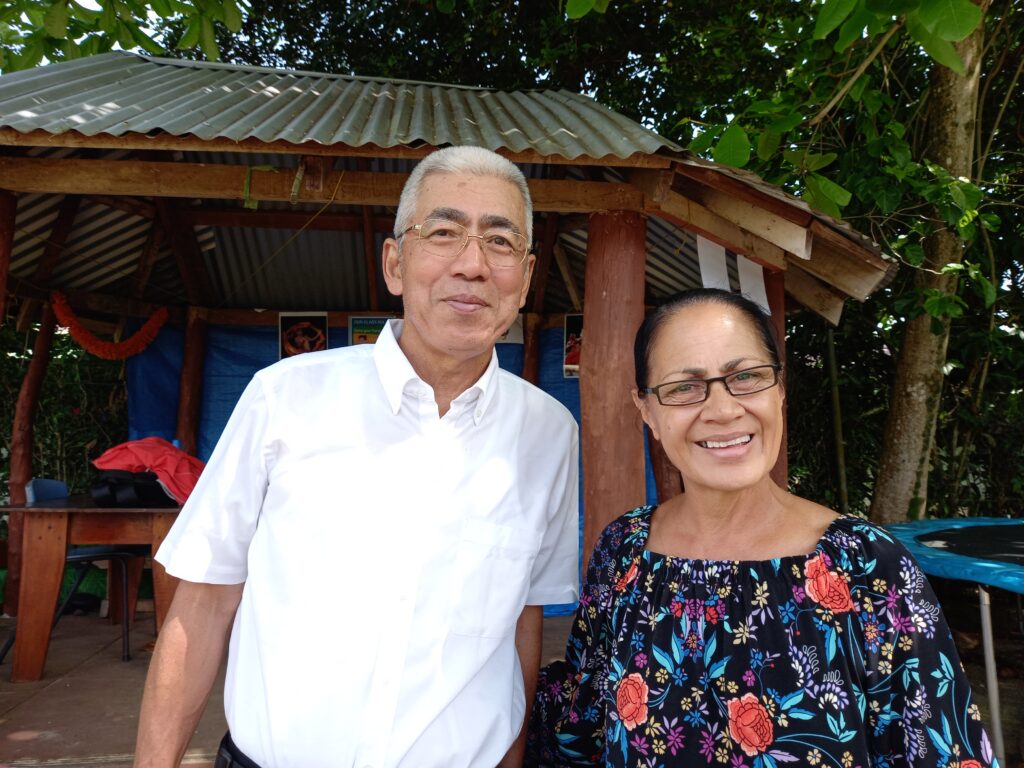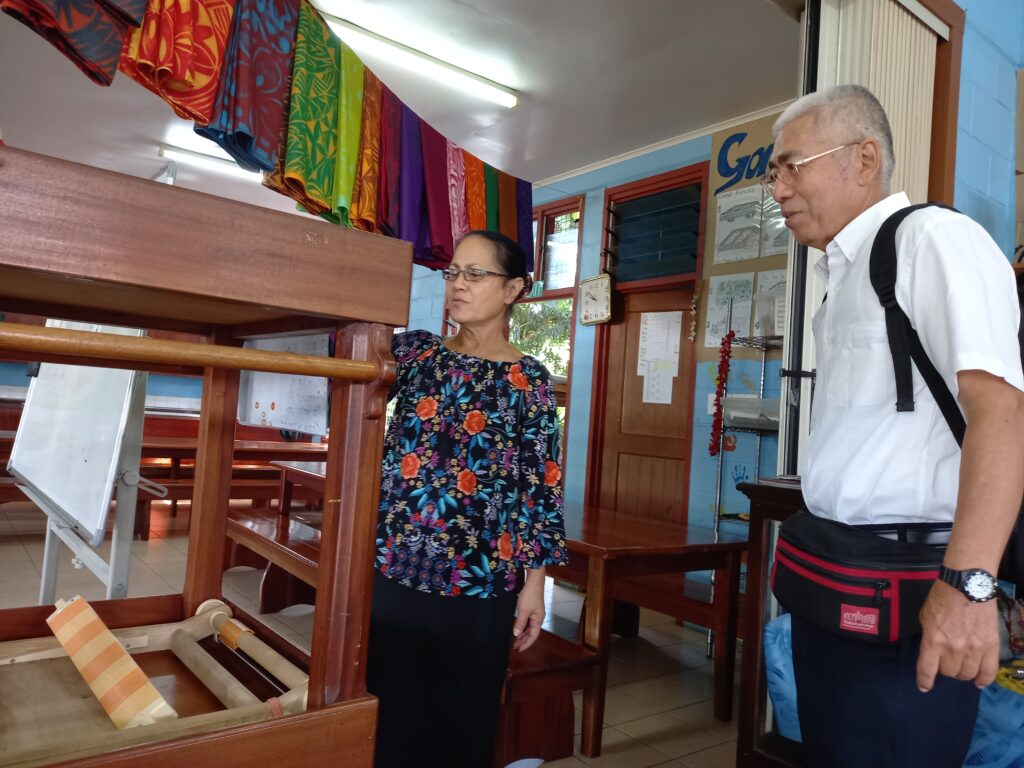
JICA Volunteer Tatsuo Ito with Sharon Suhren Principal Aoga Fiamalamalama
Three decades ago 35 years to be exact in 1988, (Japan International Cooperation Volunteer) JICA Volunteer Tatsuo Ito had last set foot in Samoa.
He first arrived in December 1986 as a member of JOCV (Japan Overseas Cooperation Volunteer) working two years in Inventory Control at Samoa’s Ministry of Public Works, as it was called back then, known today as the Ministry of Works, Transport and Infrastructure.
Tatsuo produces an album of old photos fondly remembering Samoa from those days.
“Compared to the rickety roads back then, now there are traffic lights and vehicles driving on the left-hand side today with it’s well-maintained roads,” he remembered.
“Things have completely changed except the stray dogs are still the same as they were back then.”
Since leaving Samoa, Tatsuo returned to Japan and taught commercial economics and bookkeeping accounting at Saitama Prefectural Minano High School for ten years.
By 2002, his career turned towards teaching special students with intellectual disabilities.
This has been the case for him over the last two decades. He has worked as a teacher and Chief of Agriculture and Horticulture in organic farming at Chichibu Special Support School and teaching at Honjo Special Needs School.

It is for this latter experience that Tatsuo has returned to Samoa to assist Principal Sharon Suhren, the staff and especially the special students at Aoga Fiamalamalama School (formerly IHC International Handicapped Corporation) – Alafua, in Welfare and Education for Persons with Disabilities.
(right) A young Tatsu Ito on his first volunteer outing in Samoa back in 1986
His work at the school encompasses supporting the needs of students with disabilities, helping the older students with pathways to employment, teaching vocational areas such as agricultural; keyhole gardening from setting up to maintenance and harvest stages, vegetable growing, cooking, music, sewing and small carpentry projects.
JICA Samoa values it’s long working relationship with Aoga Fiamalamalama and Tatsuo Ito is now the ninth volunteer placement through JICA’s Volunteer program.
Aoga Fiamalamalama is a non-governmental school that was established in 1979 by a group of parents.
At the time, there was a lack of higher education for Special needs intellectually disabled children of Samoa, so these parents of primary-aged (5 to 13 years) special needs children began forming a group operating out of their homes which later became the IHC.
Funding and many fundraisings enabled purchase of the land where Aoga Fiamalamalama is located today.
The older buildings were built with the support from fundraisers, The Rotary Club, Fletcher’s Construction, NZ High Commission and many local businesses and overseas partners.
The two-storey school building was made possible through Japan’s Grant Assistance for Grassroots Human Security Project (GGP).
